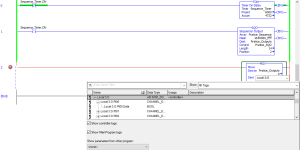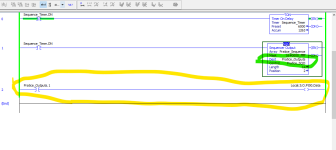Slwagner73
Lifetime Supporting Member
Well Gentlemen, once again, I am trying to figure out how to do something in Logix, and I cannot seem to get it to work like all the YouTube videos.
I have a 5380 that I and trying to get to sequence the outputs, but after watching a handful of videos, I cannot replicate the Outputs.
Where everyone else is able to select the entire output card for the MOV part, I can only select one output, and I can't seem to create any sort of alias to get this to work.

I must be missing something DUMB...
I have a 5380 that I and trying to get to sequence the outputs, but after watching a handful of videos, I cannot replicate the Outputs.
Where everyone else is able to select the entire output card for the MOV part, I can only select one output, and I can't seem to create any sort of alias to get this to work.

I must be missing something DUMB...




